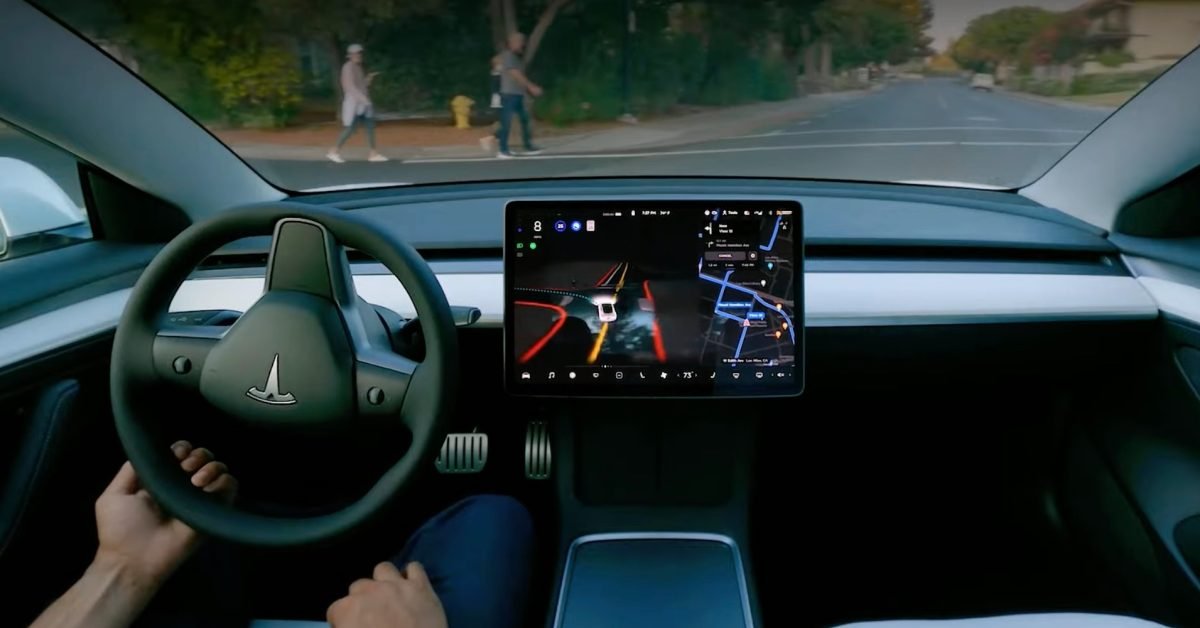Tesla has moved its security monitor from the passenger seat to the driver’s seat in its ‘Robotaxi’ service in Austin, Texas as it is expanded to highways.
However, the timing may be closer to rules.
When Tesla launched its ‘Robotaxi’ service in Austin, we warned that the move was more about optics than security, as the car manufacturer basically deployed his ‘monitored full self -driving’ (FSD) system with employees monitoring from the front passenger seat, with a finger on a killing contact.
In itself, Tesla’s Robotaxi Service in Austin should not be impressive to anyone who is familiar with FSD who has been around for almost 5 years.
FSD is able to perform virtually all tasks related to driving, but it is still considered a level 2 driver assistant system because it cannot perform these tasks reliably over tens of thousands of miles, which is why Tesla maintains that the driver is always responsible for the vehicle.
In his Robotaxi service, which uses Tesla’s own fleet rather than consumer vehicles, Tesla employees act as supervisors. For the first two months of the service, the supervisors sat in the front passenger seat with a finger ready to press a button that would bring the vehicle to a stop.
This was undoubtedly less safe than if they were sitting in the driver’s seat with multiple controls, but it did not add lots of risk as the service only worked at lower speeds on surface streets.
However, Tesla expanded its Robotaxi on highways on September 1st, and it decided to move the safety monitor to the driver’s seat:
Many people assume that Tesla decided to move them to the driver’s seat due to the extra risk that comes with driving at higher speeds on highways, but that may not be the only reason.
The timing is also in line with the new Texas Senate Bill 2807, which now controls the implementation of automated driving systems in the state, which comes into force on September 1st.
Prior to this Act, Texas was relatively permitted with regard to autonomous vehicle testing under previous statutes, such as SB 2205 (2017), which enabled operations without a human driver as long as vehicles complied with the traffic laws, had recording units and met federal standards.
However, SB 2807 introduces stricter supervision for truly driverless operations, including requirements for security data reporting, interaction plans for the first responder and potential revocation of permission whose security standards are not met.
Companies must also demonstrate that their systems can achieve a “minimal risk card” (eg safe to pull over) in the event of failure and need to qualify as a level 4-5 autonomous driving based on the SAE standard.
To achieve Level 4-5 there can be no human supervision.
Therefore, by moving the supervisor into the driver’s seat, which now serves as a security driver, the system returns to level 2, allowing Tesla to continue operating his “Robotaxi” without obtaining Level 4 autonomy.
Electek Tag
Don’t misunderstand me, I prefer a lot to see this with a “security driver” in the driver’s seat.
However, let’s not know ourselves, this is proof that Tesla’s ‘Robotaxi’ program is no more than Tesla monitored FSD with any software to control Ride -Hailing.
That’s it.
The only way to prove otherwise is to improve the system sufficient to serve only rider, such as Waymo, after demonstrating security through the release of release data covering millions of miles.
Until then, it will continue to be fair to say that Tesla is the year behind Waymo.
FTC: We use income that earns Auto -connected links. More.
